Oamaru, a quiet, picturesque town on the east coast of the South Island of New Zealand, has a population of about 14,000 humans and 3,000 little blue penguins. It’s also notable for an intact precinct of Victorian “Whitestone” buildings near the harbour, made from Oamaru stone, a light-coloured local limestone. This provides the perfect setting for the annual Steampunk Festival NZ. As a New Zealand Steampunk website explains, Steampunk culture is where “Victorian elegance meets retro-futuristic innovation in the picturesque landscapes of New Zealand”. The 2024 Steampunk Festival took place from May 30 to June 3. This year’s theme was Botanical Mechanical, so plants featured in many of the costumes people created for the event.
I have always wanted to attend this festival. Although June 1 marks the first day of winter in New Zealand, the forecast was for sunny weather and relatively mild temperatures (a high of 12°C over the weekend), so I decided this would be the year to do it. I drove up from Dunedin (120 km south of Oamaru) for the day on Saturday, June 1, arriving just in time for the Grand Parade at 11:00 am. I drove back to Dunedin after sunset and returned on Sunday, June 2. Aside from attending the teapot race in the Scottish Hall on Sunday afternoon, I spent most of the time out in the streets photographing people and their inventive costumes and props.
Classic street photography is about candid images of people in public places. The photographer usually tries to be as inconspicuous as possible and avoids interacting with the subjects in the scene. It’s a useful technique for documenting everyday life in public places without disturbing the dynamic or making the photographer the centre of attention. As soon as someone looks at the camera, the “fourth wall” is broken, the subjects become performers, and the scene is no longer “natural” or “as observed”. The shot becomes a street portrait rather than a street photograph. But that can be fine, too.
Participants involved in public events such as parades, rallies, protests, and festivals are there to be seen and documented. Photographers and their cameras are an expected and integral part of the action. Their visibility and involvement make a significant contribution to the event. In these situations, attempting to be invisible or unobtrusive is pointless; active engagement is a better strategy. The visibility and use of a camera become part of the scene, part of the performance, and part of the shared experience. The recorded images are not merely photographs taken but memories co-created. They result from chance meetings in fortunate circumstances — a productive, improvised collaboration. These images are social artefacts that have been socially constructed and belong to everyone who was there and took part.
Over the two days, I took about 2,800 photos. After editing and processing in Lightroom, I had just over 1,000 remaining. Of these, I selected 200 to share with a Creative Commons CC-BY (Attribution Only) Licence. I uploaded them to a folder online and shared the link (bit.ly/Steampunk2024) on my Instagram account and via email with the Steampunk Festival organisers. You can use the link to access the 200 final, full-resolution photos, including the 12 below (which have been sampled down to 3,000 pixels high).
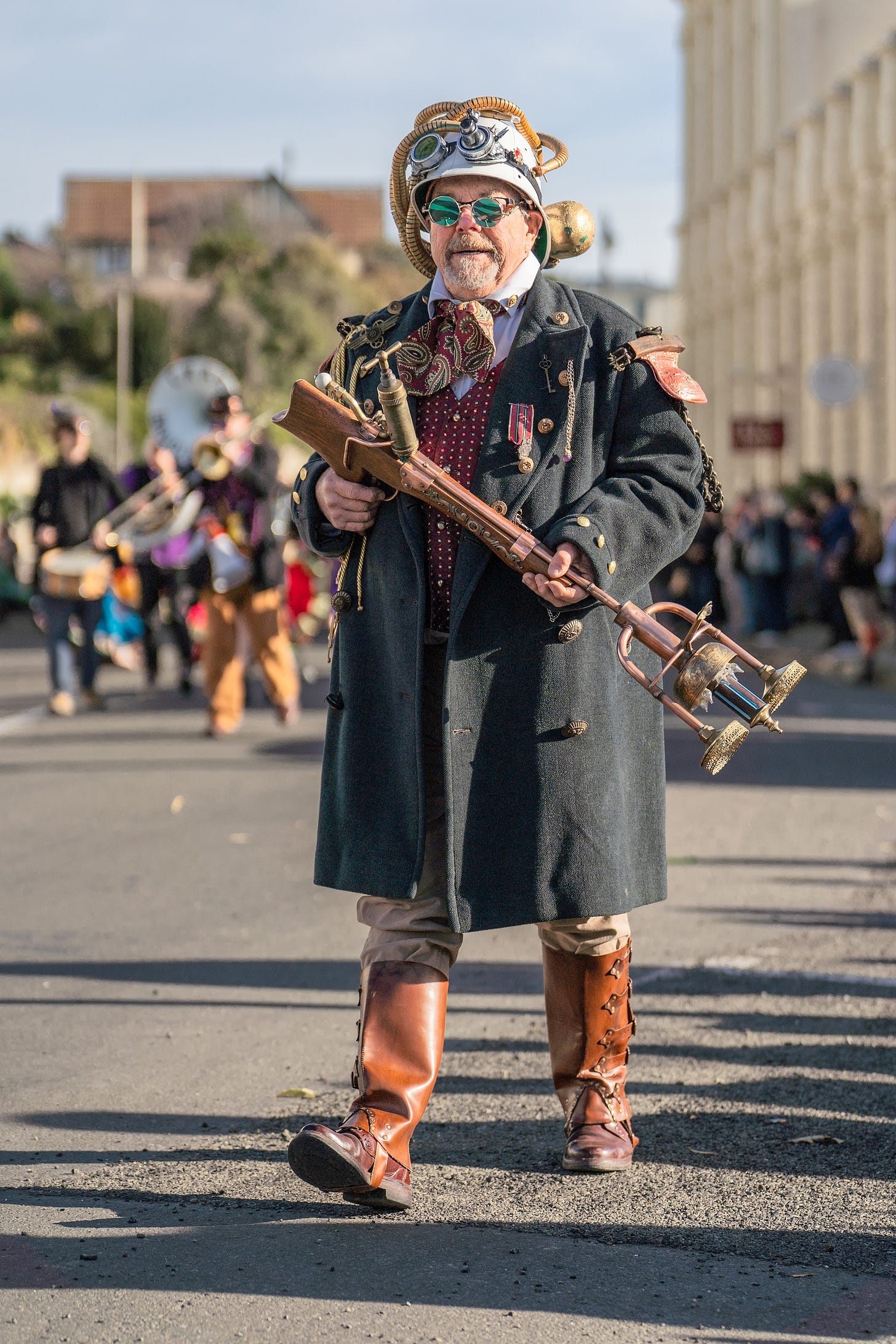
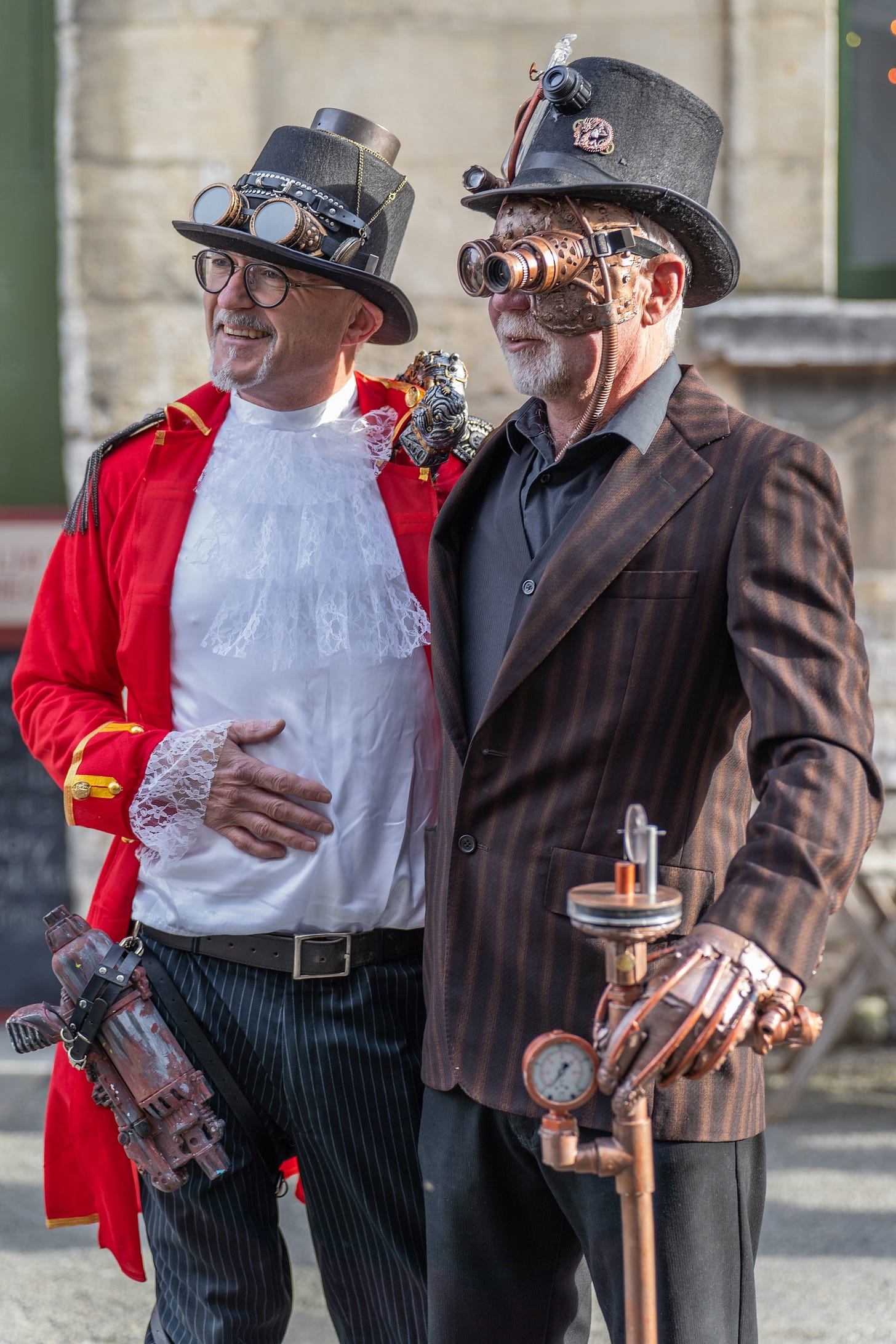
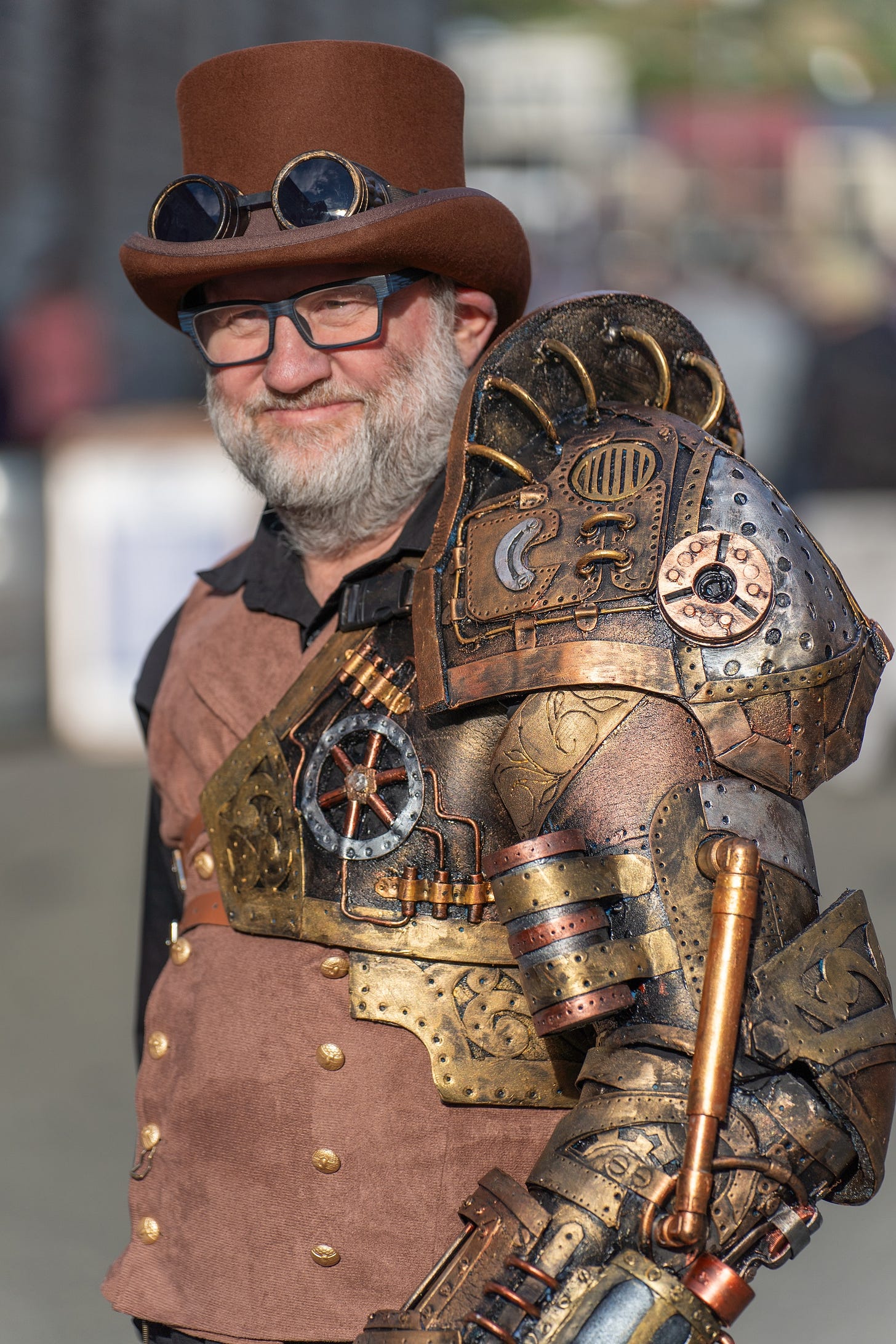
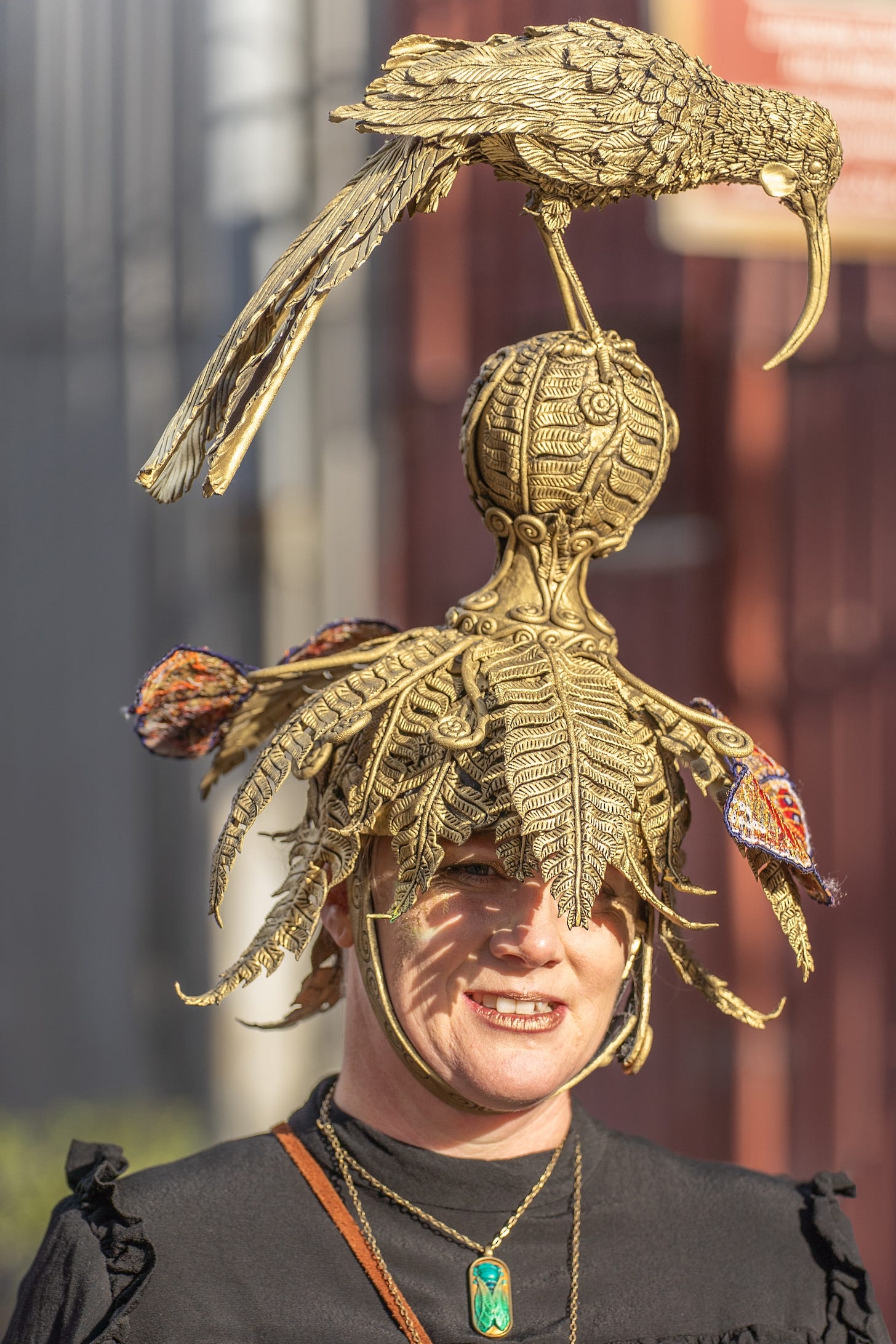
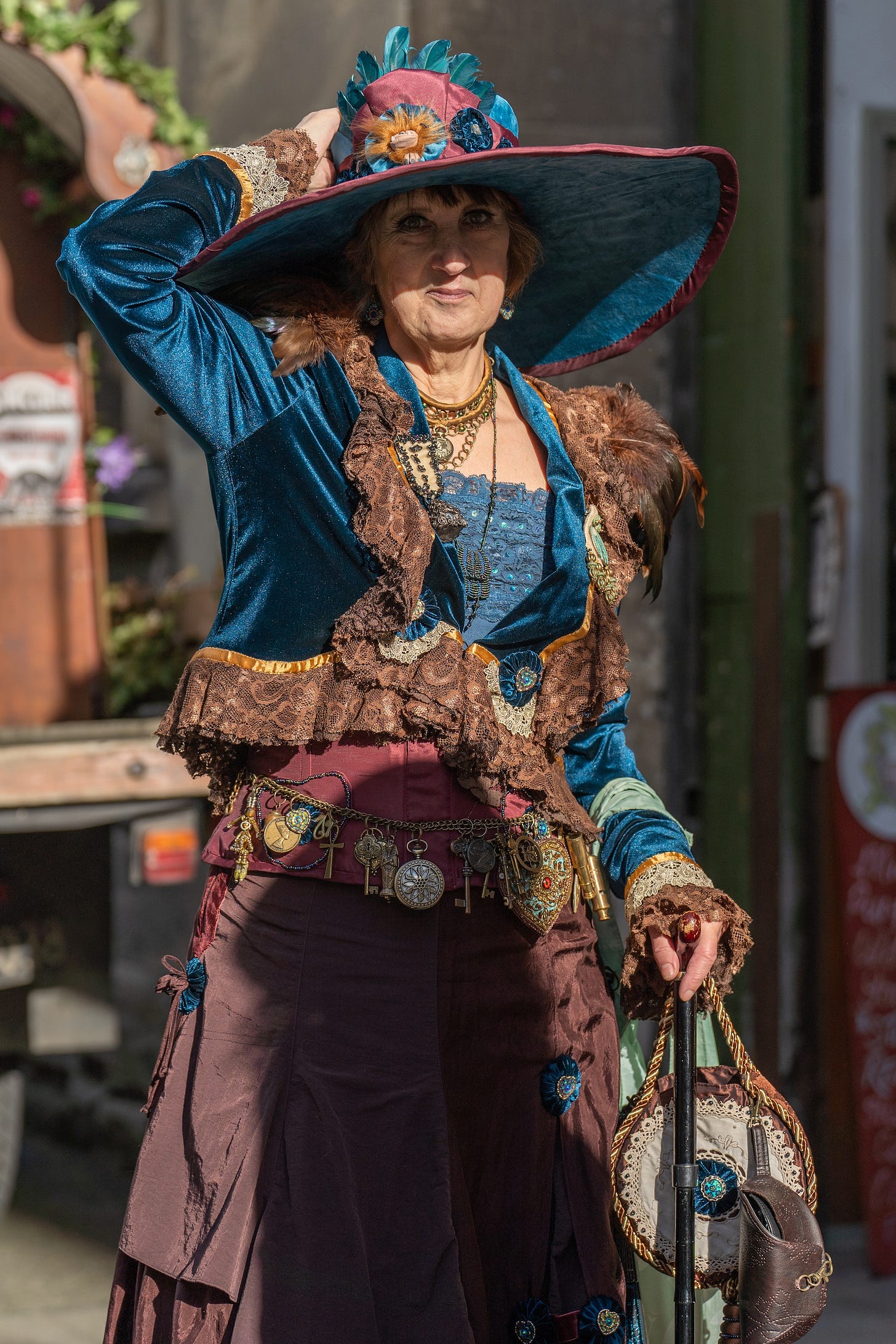
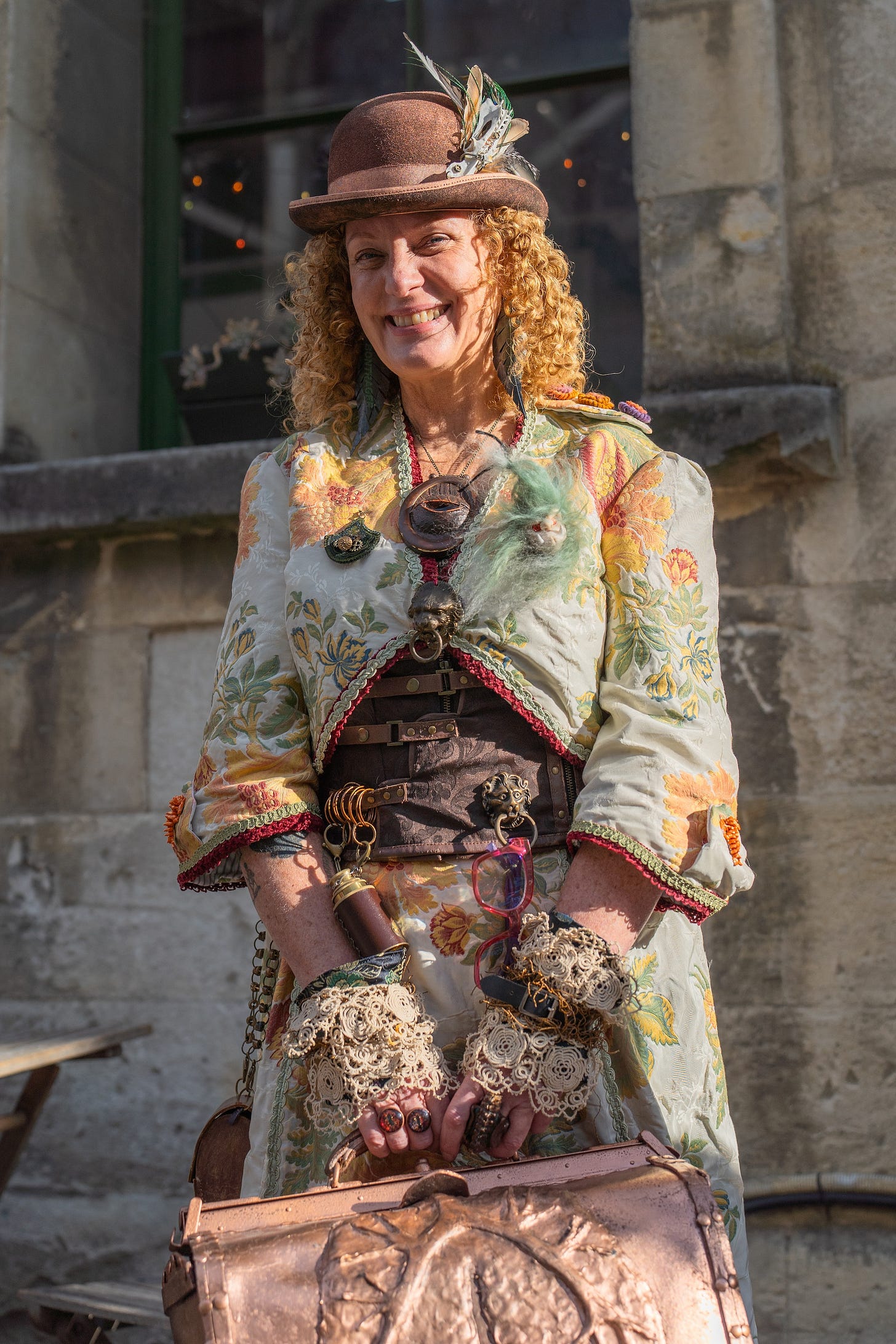

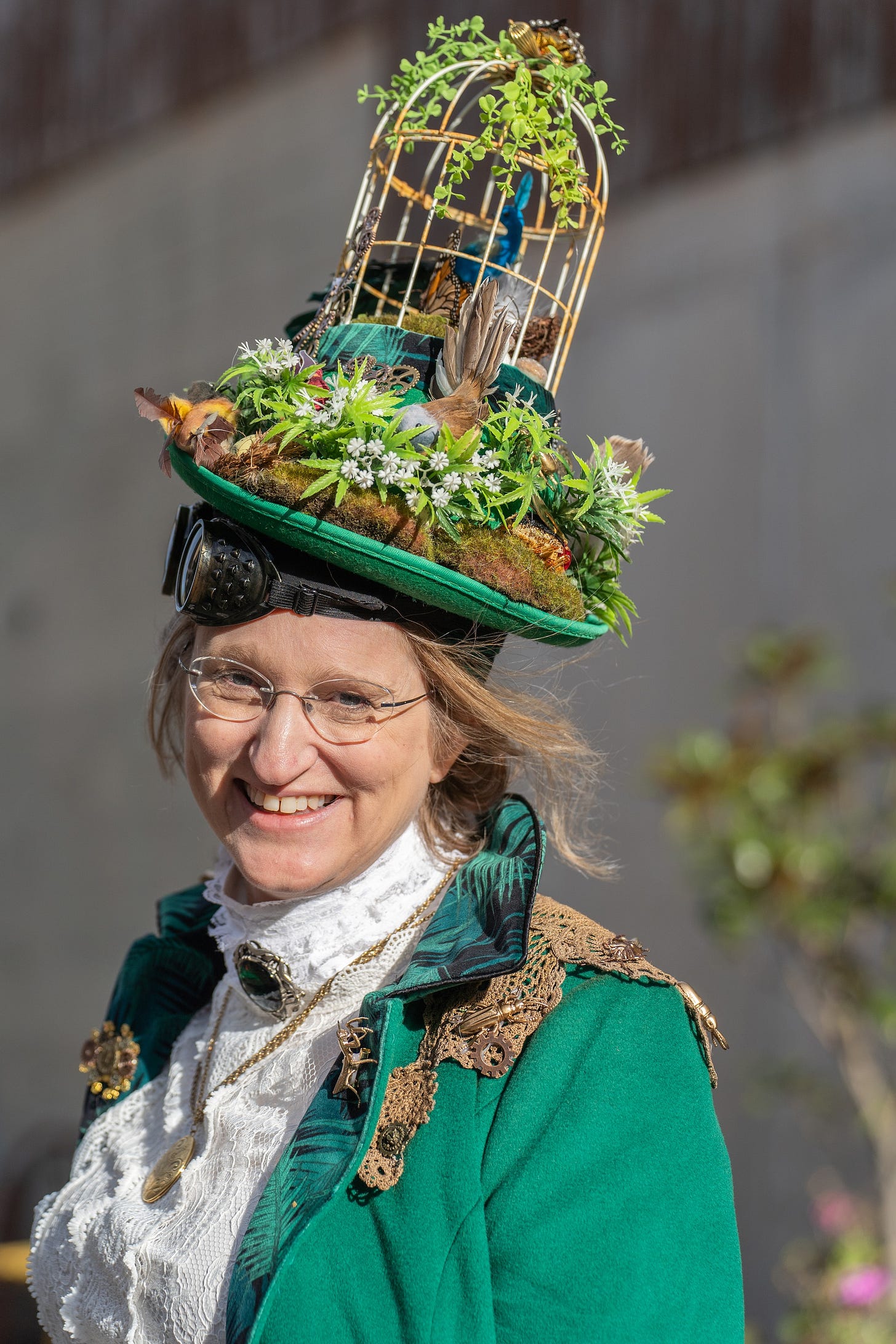
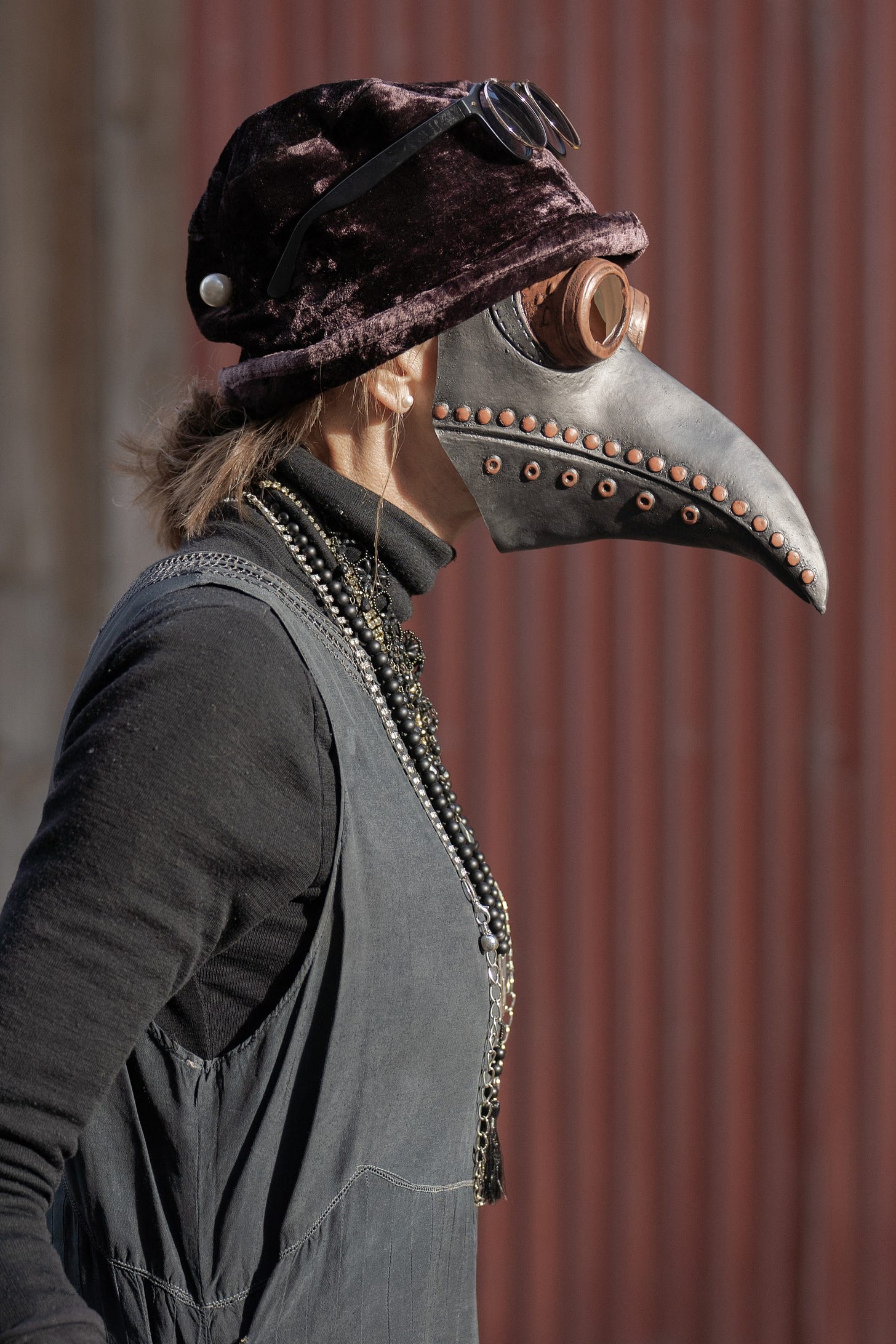
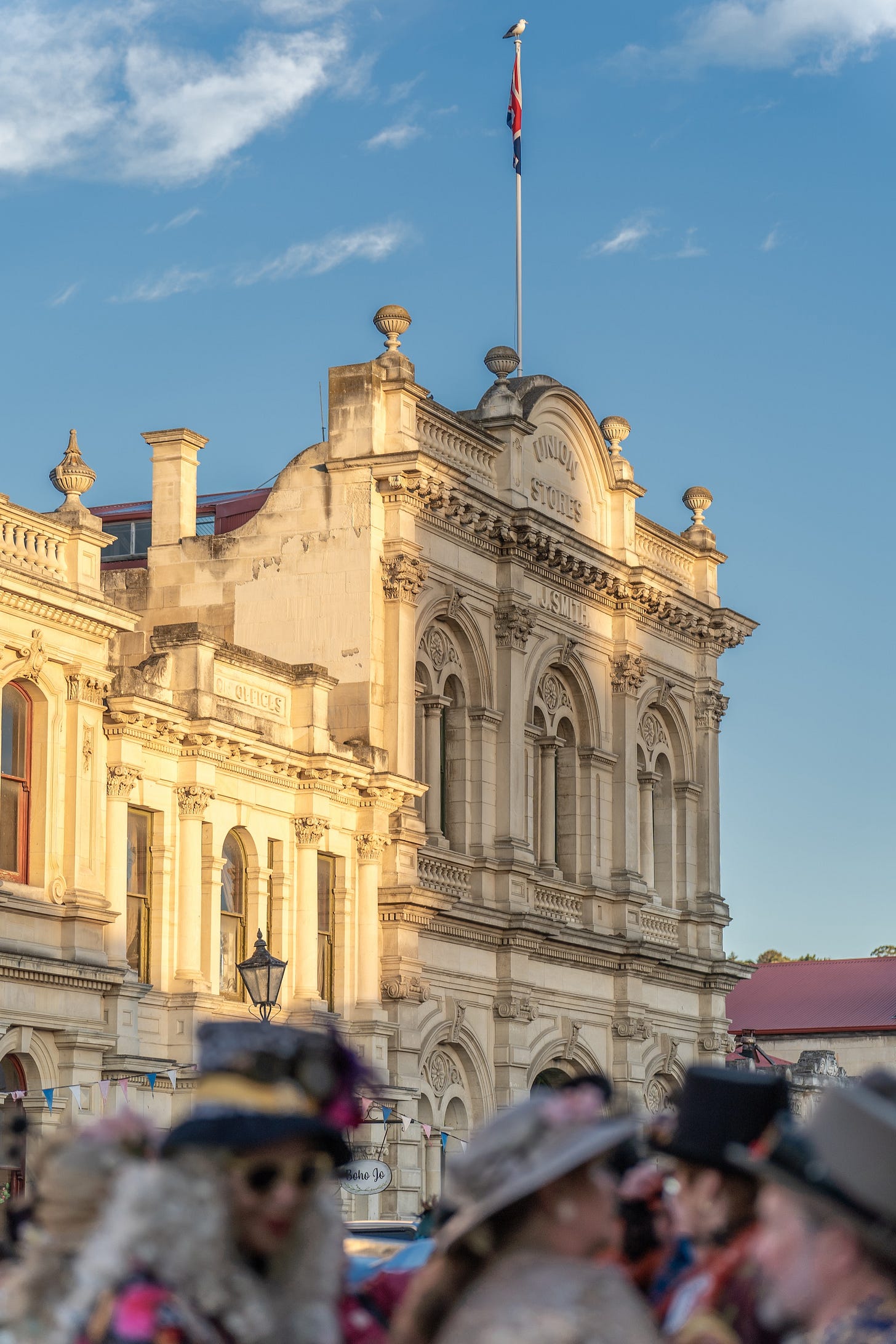
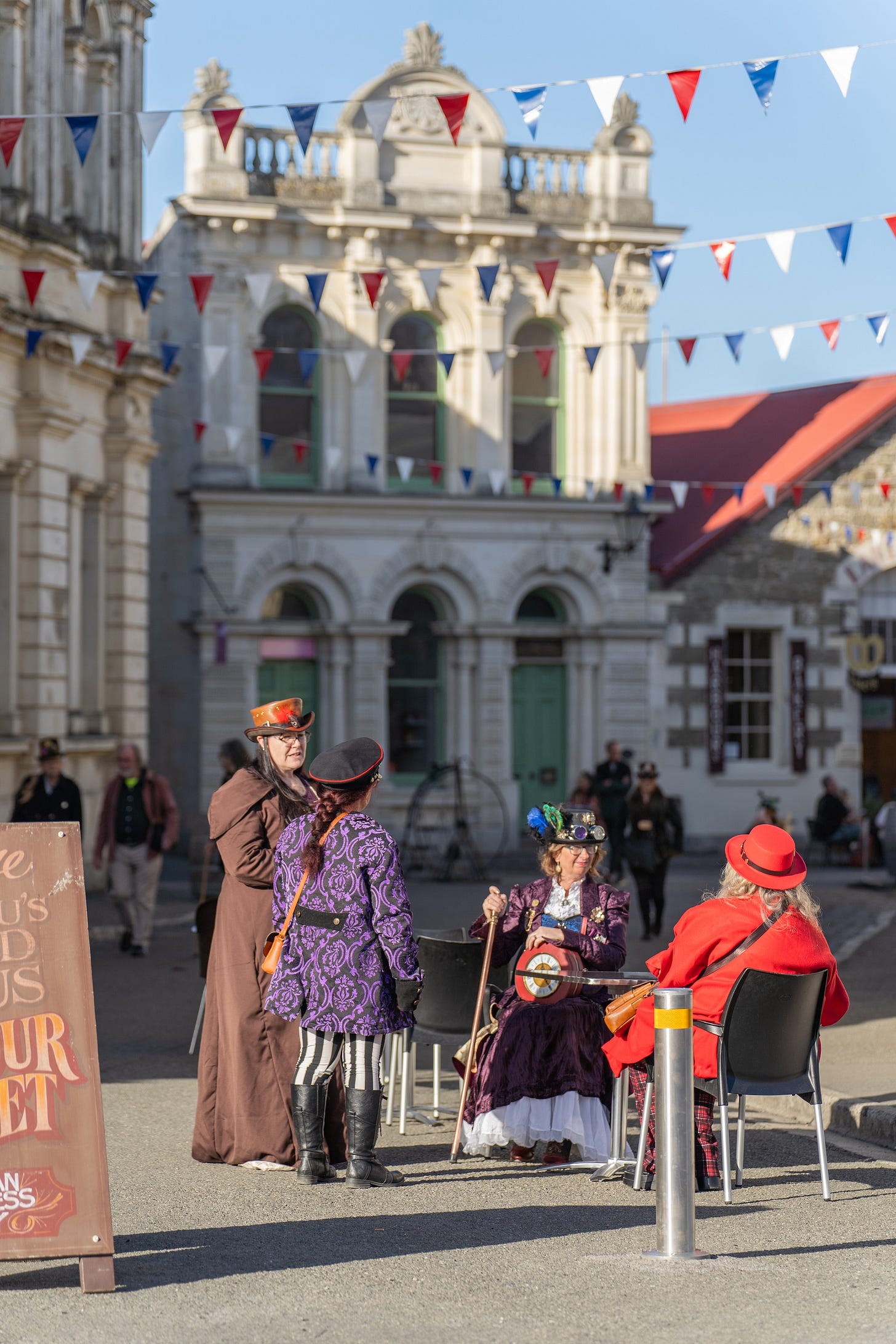
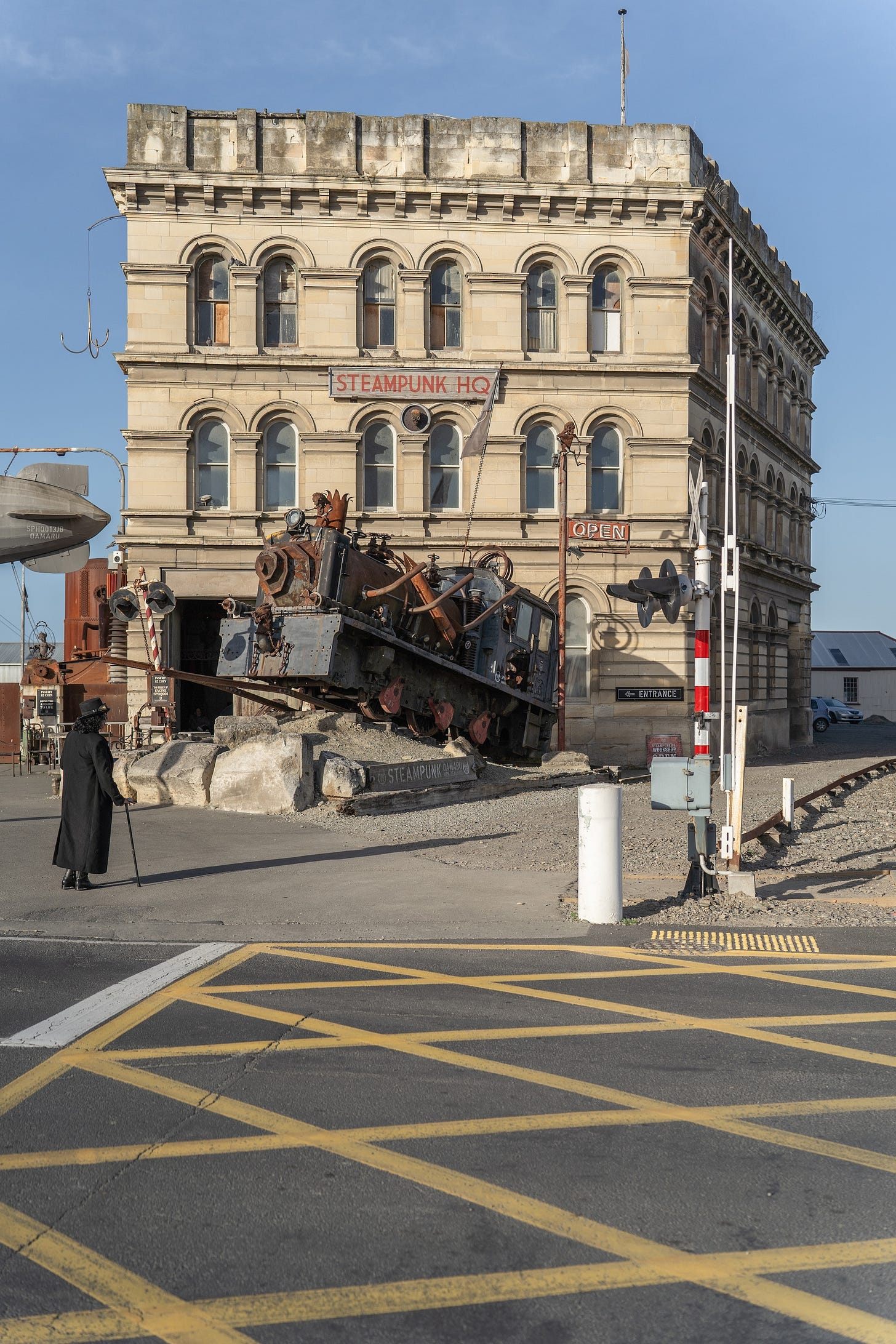
What’s next?
I have photos from the Dunedin Midwinter Carnival (June 21) that I haven’t processed yet. I also have plenty of street photos that I’ve taken around town recently that are less dramatic but might also be worth sharing. I’ll surprise you.
What do you think?
I invite you to leave a comment below.




What wonderful images Mark - they are so vibrant almost transparent - like the old days of 'slides'!!
I feel like of all the festivals and protests you have shot and shares these are the most fun and the best images. Your enjoyment of their work shows through in the photography.